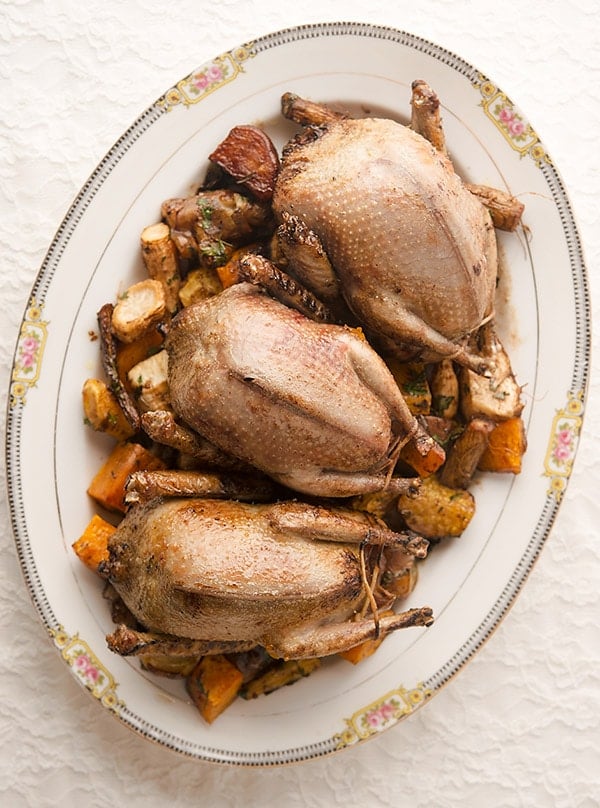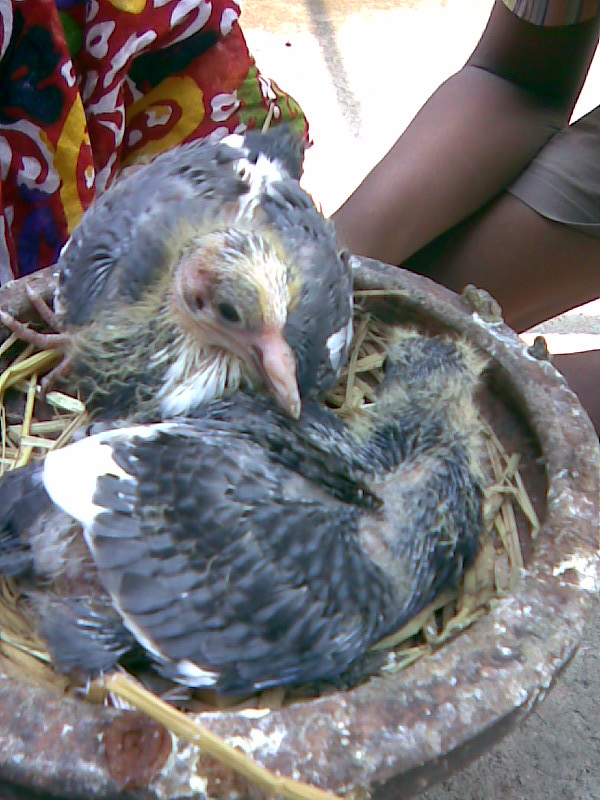Are Pigeons Good to Eat? (Health Benefits and Risks)
Pigeons are edible and have been consumed in various cultures. They offer a lean source of protein and can be quite flavorful.
Pigeons, often seen in urban areas, have a long history as a food source. Known as squabs when young, they are prized for their tender meat. Many gourmet restaurants feature pigeon dishes, showcasing their culinary versatility. While some may view them as pests, these birds are rich in nutrients.
They provide a lean protein option that is low in fat. Pigeon meat is often compared to duck or dark chicken, offering a unique taste experience. Farmers and chefs alike appreciate their sustainability and minimal environmental impact. Exploring pigeon as a food option can open new avenues for adventurous eaters.
Introduction To Pigeon As A Food Source
Credit: www.quora.com
Pigeons have been part of human diets for centuries. They provide a unique flavor and texture. Many cultures enjoy pigeon meat for its rich taste. This section explores the historical context and culinary uses of pigeons worldwide.
Historical Context
Pigeons have a long history as a food source. Ancient Egyptians raised pigeons for food. Romans also enjoyed pigeon dishes, often served at banquets. In medieval Europe, pigeons were commonly consumed. They were easy to raise and provided a good meat source.
- Pigeons served as a staple in many diets.
- Royalty often kept pigeons for gourmet meals.
- Farmers raised them for both meat and eggs.
Culinary Uses Worldwide
Pigeon meat is popular in various cuisines. It is known for its tender texture. Different cultures prepare pigeons in unique ways.
| Country | Culinary Dish |
|---|---|
| France | Pigeon à la Crème |
| China | Stewed Pigeon with Spices |
| Italy | Pigeon Risotto |
| United States | Squab with Garlic |
People enjoy pigeon in various forms:
- Roasted
- Grilled
- Stuffed
- Stewed
Pigeon meat is rich in nutrients. It offers protein and essential vitamins. Chefs appreciate its versatility in cooking.
Nutritional Profile Of Pigeon Meat
Pigeon meat is often overlooked as a food source. Many people do not know its benefits. Understanding its nutritional profile is essential for anyone considering this unique meat.
Protein Content
Pigeon meat is an excellent source of protein. It provides a high protein content per serving. Here’s a quick look at its protein benefits:
- Rich in essential amino acids
- Promotes muscle growth and repair
- Low in fat compared to other meats
On average, a 100-gram serving of pigeon meat contains approximately:
| Type of Meat | Protein (g) |
|---|---|
| Pigeon | 25 |
| Chicken | 31 |
| Beef | 26 |
Vitamins And Minerals
Pigeon meat is packed with vitamins and minerals. These nutrients support overall health. Here are some key vitamins and minerals found in pigeon meat:
- Iron: Important for blood health
- Zinc: Supports the immune system
- Vitamin B12: Essential for nerve function
- Phosphorus: Aids in bone health
A 100-gram serving of pigeon meat offers:
| Nutrient | Amount |
|---|---|
| Iron | 4 mg |
| Zinc | 2.5 mg |
| Vitamin B12 | 6 µg |
| Phosphorus | 200 mg |
Pigeon meat can be a nutritious addition to any diet. It offers a unique flavor and numerous health benefits.
Health Benefits Of Eating Pigeon
Pigeon meat, often overlooked, offers several health benefits. It is a rich source of nutrients. Many cultures enjoy this delicacy for its flavor and health perks.
Boosts Immune System
Pigeon meat is packed with nutrients. These nutrients help strengthen the immune system.
- Vitamin B6: Supports immune function.
- Zinc: Aids in healing and immune response.
- Iron: Helps transport oxygen in the blood.
Eating pigeon can enhance your body’s defense mechanisms. It may reduce the risk of illnesses. A strong immune system is essential for overall health.
Aids In Muscle Development
Pigeon meat is high in protein. Protein is vital for muscle growth and repair.
| Nutrient | Benefit |
|---|---|
| Protein | Builds and repairs muscles. |
| Omega-3 Fatty Acids | Supports muscle function. |
Regularly consuming pigeon meat can help athletes. It promotes lean muscle mass. Healthy muscles improve strength and endurance.

Credit: honest-food.net
Potential Risks And Considerations
Eating pigeons can be enjoyable, but certain risks exist. Understanding these risks is vital for safe consumption. Below are key factors to consider.
Contaminants And Diseases
Pigeons can carry various contaminants and diseases. These can affect health significantly. Some common concerns include:
- Histoplasmosis: A fungal infection found in pigeon droppings.
- Salmonella: Bacteria that can cause severe gastrointestinal illness.
- West Nile Virus: Transmitted by mosquitoes that feed on infected pigeons.
Proper handling and cooking reduce these risks. Always cook pigeons to an internal temperature of 165°F (74°C).
Allergic Reactions
Some people may experience allergic reactions to pigeons. Common symptoms include:
- Itching
- Swelling
- Difficulty breathing
Consult a doctor if you suspect an allergy. Avoid consuming pigeons if you have known sensitivities.
Culinary Practices: Preparing Pigeon Safely
Pigeon meat can be a delicious and nutritious option. Proper preparation is crucial for safety and taste. Follow these guidelines to ensure a delightful dining experience.
Proper Cleaning And Cooking
Cleaning and cooking pigeon properly helps eliminate harmful bacteria. Follow these steps for safe preparation:
- Gather supplies: You’ll need a sharp knife, cutting board, and bowl.
- Remove feathers: Pluck feathers carefully to avoid tearing the skin.
- Gut the bird: Make a small incision to remove internal organs.
- Wash thoroughly: Rinse the pigeon under cold running water.
- Dry the meat: Use paper towels to pat it dry before cooking.
Cook pigeon meat to an internal temperature of at least 165°F (74°C). This ensures safety and better flavor.
Recommended Recipes
Here are some delicious recipes to try:
| Recipe Name | Main Ingredients | Cooking Time |
|---|---|---|
| Roasted Pigeon | Pigeon, garlic, herbs, olive oil | 1 hour |
| Pigeon Stew | Pigeon, vegetables, broth, spices | 2 hours |
| Pigeon Pie | Pigeon, pastry, mushrooms, onions | 1.5 hours |
Try these simple recipes:
- Roasted Pigeon: Season with herbs and roast until golden.
- Pigeon Stew: Simmer with vegetables for a hearty meal.
- Pigeon Pie: Bake with pastry for a comforting dish.
Enjoy your culinary journey with pigeon meat. Each dish offers unique flavors and textures.
Ethical And Environmental Aspects
Exploring the ethical and environmental aspects of eating pigeons is essential. Understanding how these birds fit into our food systems can guide choices. Let’s examine sustainable sourcing and their impact on ecosystems.
Sustainable Sourcing
Sourcing pigeons ethically is important for sustainability. Here are key points to consider:
- Local farms: Choose pigeons raised on small farms.
- Organic practices: Look for birds fed organic feed.
- Humane treatment: Ensure farms follow humane practices.
These practices reduce the carbon footprint. They also support local economies.
Impact On Ecosystems
Pigeons can play a role in local ecosystems. Understanding their impact helps us make informed choices.
| Aspect | Positive Impact | Negative Impact |
|---|---|---|
| Nutrient Cycling | Pigeons contribute to soil health through droppings. | Overpopulation can lead to soil depletion. |
| Predator-Prey Balance | They serve as prey for birds of prey. | High numbers may disrupt local bird populations. |
| Urban Ecosystems | Pigeons help maintain urban biodiversity. | Can become pests in dense populations. |
Understanding both impacts is crucial for ethical eating. Consider how pigeon consumption affects our environment.
Comparing Pigeon To Other Meats
Pigeon meat, also known as squab, offers a unique flavor. It contrasts with common meats like chicken, beef, and pork. Let’s explore how pigeon compares in terms of taste, texture, and nutrition.
Taste And Texture
Pigeon meat has a rich, gamey flavor. Many describe it as slightly sweeter than chicken. The texture is tender and juicy, making it enjoyable to eat.
- Pigeon: Rich, gamey, slightly sweet
- Chicken: Mild, versatile, widely used
- Beef: Bold, hearty, chewy
- Pork: Sweet, fatty, tender
Cooking methods also affect taste. Roasting brings out the natural flavors. Grilling adds a smoky touch. Each method enhances the meat’s uniqueness.
Nutritional Differences
Pigeon meat is nutrient-dense. It contains essential vitamins and minerals. Here’s how it stacks up against other meats:
| Meat Type | Calories (per 100g) | Protein (g) | Fat (g) | Iron (mg) |
|---|---|---|---|---|
| Pigeon | 173 | 25 | 7 | 3.5 |
| Chicken | 165 | 31 | 3.6 | 1.0 |
| Beef | 250 | 26 | 20 | 2.6 |
| Pork | 242 | 27 | 14 | 1.0 |
Pigeon has fewer calories than beef and pork. It is higher in protein than chicken. Iron content is significant, promoting healthy blood.
Choosing pigeon can diversify your diet. It provides unique flavors and beneficial nutrients. Enjoying pigeon opens the door to new culinary experiences.
Final Thoughts: Balancing Benefits And Risks
Eating pigeons can spark both curiosity and concern. Understanding the benefits and risks is essential. Pigeons offer nutritional value, but safety is key. Let’s explore informed choices and the future of pigeons as food.
Making Informed Choices
Choosing to eat pigeons requires knowledge. Here are some factors to consider:
- Source: Always select pigeons from reliable sources.
- Preparation: Proper cooking kills harmful bacteria.
- Health benefits: Pigeons are high in protein and low in fat.
- Local regulations: Check laws about hunting and consuming pigeons.
Many cultures enjoy pigeons. They are often used in traditional dishes. This culinary history adds to their appeal. Yet, consider the risks of consuming wild pigeons.
Future Of Pigeon As Food
The future of pigeons as food looks promising. Here are some trends to note:
| Trend | Description |
|---|---|
| Farmed Pigeons | More farms will raise pigeons for meat. |
| Culinary Exploration | Chefs will experiment with pigeon recipes. |
| Sustainability | Pigeons have a low environmental impact. |
As awareness grows, pigeon meat may gain popularity. Communities might embrace this protein source. Understanding both the benefits and risks is vital for safe consumption.

Credit: en.wikipedia.org
Frequently Asked Questions
Are Pigeons Safe To Eat?
Pigeons are generally safe to eat if properly cleaned and cooked. They are consumed in various cuisines worldwide.
What Do Pigeons Taste Like?
Pigeons have a rich, gamey flavor, often compared to dark meat chicken or duck. Their texture is tender and juicy.
How To Prepare Pigeons For Cooking?
Pigeons should be plucked, cleaned, and gutted. Marinating enhances flavor before grilling, roasting, or braising.
Are Pigeons Farmed For Food?
Yes, some pigeons are specifically bred for culinary purposes. They are raised in controlled environments for meat production.
Are pigeons edible to eat?
Pigeons are indeed edible. Many cultures enjoy pigeon meat, often referring to it as “squab” when served in restaurants. The meat is tender and flavorful, making it a delicacy in various dishes.
Farmers raise pigeons specifically for food, and they are often found in gourmet recipes. While city pigeons may carry disease, those raised in clean environments are safe to eat. Cooking methods include roasting, grilling, or stewing.
Always ensure proper preparation and cooking to enjoy the best flavor and quality. Eating pigeons can be a unique culinary experience for those willing to try it.







